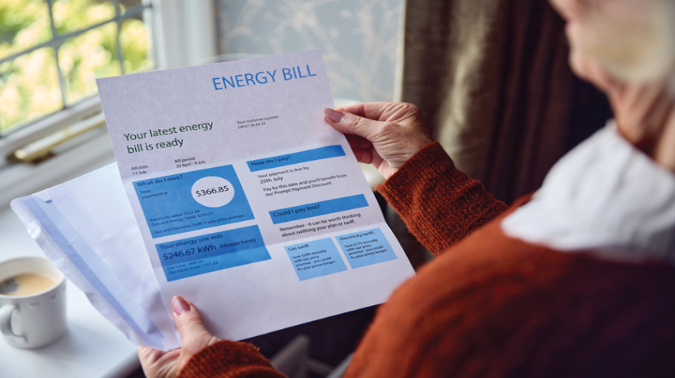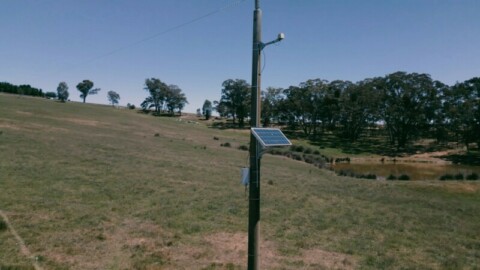By Ben Barnes, General Manager Corporate Affairs, Australian Energy Council
As the cost of living increases, energy bills are placing more and more financial pressure on consumers. In this article the Australian Energy Council (AEC) takes a look at the government reforms currently underway, and how they might impact retailers’ already supporting customers experiencing payment difficulty.
A lot has been written about the high cost of living, and the impact on the ability of customers to pay their energy bills. With the Default Offers in Victoria, New South Wales, South Australia and Queensland increasing by around 25 per cent, the pressure on energy bills is mounting. So what are governments and regulators doing to support customers to manage high energy costs?
Federal government initiatives
Energy Bill Relief Plan
In his May Budget speech, Treasurer Jim Chalmers highlighted the effectiveness of the Federal Government’s interventions at the end of 2022, advising Australians that power bills would be around 25 per cent less than they would otherwise have been.
But prices would likely remain high, and to counter the impacts, the Treasurer announced $3 billion in relief – co-funded with the states – to deliver up to $500 off the energy bills of 5 million Australians in the coming financial year.
This announcement was welcomed by industry and customer groups alike, but its implementation has been far from smooth sailing. For energy retailers already grappling with a long list of regulatory changes to be implemented in 2023, a new program with great complexity has been a challenge.
Positively, the Government has worked closely with industry to develop a delivery mechanism that will see most eligible customers automatically seeing the payment on their energy bills without the need for additional action. Customers already receiving government funded concessions and rebates from their retailer have now received the first bill relief payment directly on their bills.
However, for many customers – in particular those eligible under the bill relief package but not for energy concessions – the process has been more challenging. These include approximately 1.2 million Australians receiving payments like Family Tax Benefit and Carers Allowance. In September, these customers were sent a letter from Services Australia, advising them of their eligibility, directing the use a portal linked to their MyGov account to provide consent to share personal details with their retailer.
This relatively cumbersome process highlights the complexity of utilising exceedingly automated systems to deliver ad hoc support measures. While no doubt well-meaning, the Federal Government’s commitment to delivering the payment to a group of customers broader than those currently receiving concessions creates a problem with information asymmetry.
Retailers know their customers, but not their eligibility, while the Government knows if a person is eligible, but not which retailer they are a customer of. The AEC is confident that customers will ultimately be able to navigate the Services Australia process simply and quickly, but any hurdles in a process will always result in customers missing out – a particular concern when seeking to support vulnerable customers doing it tough.
The other challenge in implementing a program as broad as the Energy Bill Relief Payments is the how the payment is designed, a point that should be considered if another targeted support package is to be implemented in the future. Retailers operating highly complex billing systems in heavily regulated environments cannot turn features on and off with ease.
Every ‘feature’ is a challenge when implementing, creating an opportunity for errors that result in customer confusion in the best case scenario, and customers missing out on what they are entitled to in worse cases. The energy bill relief payment of $500 is split differently in each jurisdiction.
Most customers will receive $125 per quarter for a year, while others will receive $125 upfront, and another $125 early in 2024. This split of the payment meets an important policy objective – that is, spreading out the payment to reduce bills over a longer period of time. This is intended to avoid a once off ‘sugar hit’ putting further pressure on inflation, but also, in an effort to reduce the cost of energy in the Reserve Bank’s “basket of goods” over a 12 month period to reduce inflation.
But this complexity will increase the challenge for retailers, and will see customers who move house or switch retailers likely miss out on later payments. With retail prices likely to remain elevated into 2024, the AEC anticipates calls to again provide bill relief in the next financial year. It will be important to ensure any repeat scheme is as simple as possible and targeted to customer cohort’s already known to retailers to ensure that benefits flow through to those who need them most.
Energy performance and home upgrades
The May budget also pointed to energy efficiency as a means of reducing customer bills. The Federal Government provided $1 billion to the Clean Energy Finance Corporation as a means of enabling low-cost loans to be delivered through banks for home upgrades such as double glazing, insulation, and rooftop solar.
Another $300 million was offered to the states to make performance upgrades to social housing. While these initiatives will likely lead to bill reductions over time, they won’t make a material difference in the next 12 months. To date, while three of the big four banks offer green loans on their website, only the Commonwealth Bank offers a product with an interest rate materially lower than their standard variable home loan.
No data is available about its take-up, but hopefully as more customers become aware of the opportunities, in addition to the increased incentives caused by high energy bills, more and more customers benefit from lower bills in the coming years.
Financial Counselling Industry Funding Model
The Federal Government is also progressing its model that would see a broad range of industries providing voluntary contributions to support the financial counselling sector. The scheme initially set out to receive $18 to $20 million per year between 2024 and 2026 that would be distributed directly to financial counsellors to enable better service delivery.
Media reports suggest the Federal Government will receive commitments from the banks, energy, insurance and online gambling, with telecommunications, water, and the finance industry not participating in the first iteration of the scheme. The scheme, provided adequate support is received, will be implemented from January 2024.
This is a stretch, and it will be critical that the development of the body isn’t rushed to its detriment. It will also be critical that the body is set up with a clear governance framework and set of objectives that set it up for long term success – providing certainty for the sector, and enabling important support for customers that are doing it tough by paying all of their bills, not just their energy bills.
Regulator initiatives
The Australian Energy Regulator is continuing to implement its Towards Energy Equity Strategy, which seeks to reduce barriers to participation, support customers experiencing payment difficulty, ensure that the consumer voice is heard in energy consultations and improve energy affordability.
Central to this strategy is its Game Changer project, designed to identify and promote fundamental changes to the energy sector’s support frameworks to better share the costs of providing increased levels of support to vulnerable customers. The project is nearing completion, and some ideas being considered would deliver material benefits to vulnerable customers if able to be implemented, but unfortunately there are no easy victories in this space.
Key reform opportunities with broad support include ensuring all eligible customers gain access to energy concessions and enabling vulnerable customers to be moved to a retailer’s best offer without requiring consent. Other reforms are more contentious, and from the perspective of the AEC lead to more costs than benefits. These include the implementation of a central service body to manage retailer hardship functions, and a social tariff to reduce costs for vulnerable customers, with the costs socialised amongst others.
It is too early to tell where the regulator will land on its Game Changer, but given the options on the table, it is unlikely that any changes would be implemented before mid-2024 at the earliest. It’s hoped that these policies will go some way to providing additional support to customers in meeting their energy costs.
As the benefits of longer-term reforms flow through, retailers will continue to work hard to support their customers through the provision of short-term payment arrangements, longer term hardship agreements, and other bill relief to ensure vulnerable customers are effectively supported, mitigating the risk of unsustainable energy debts.
















